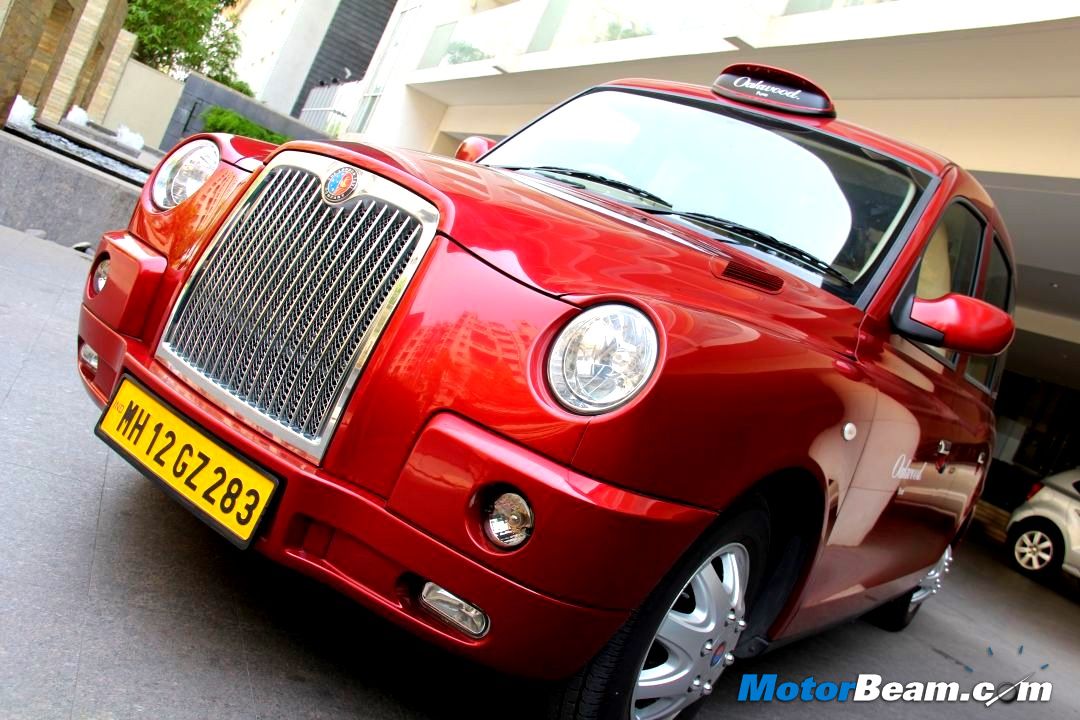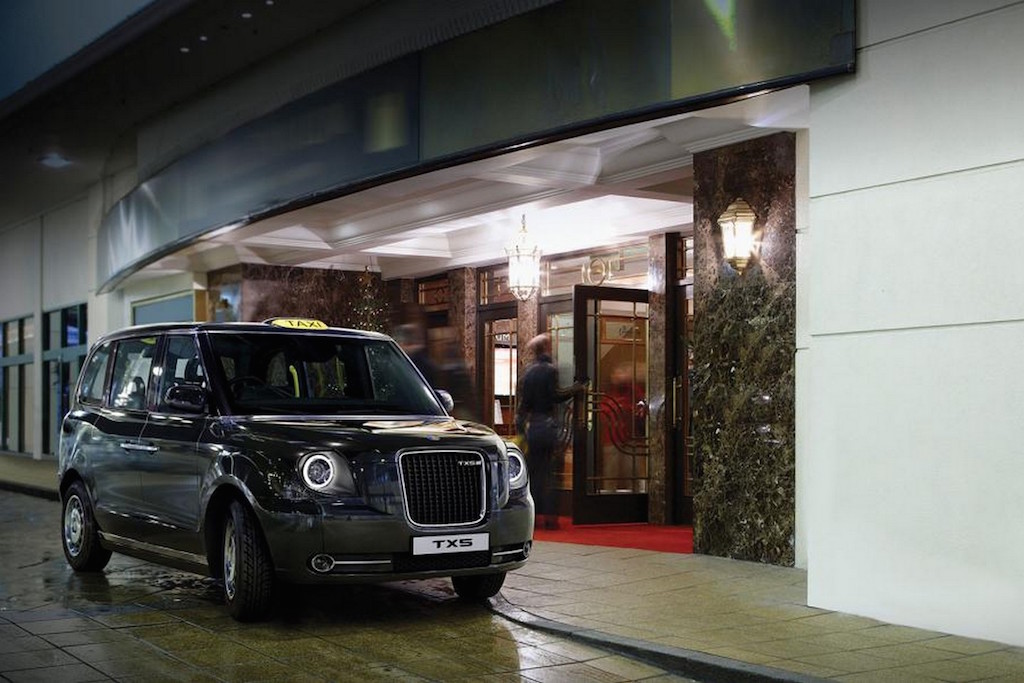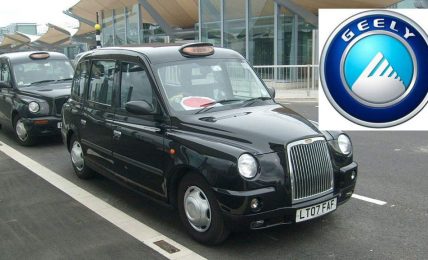
London Taxi Review
Car tested: 2011 London Taxi TX4
Price (approximate without duties): Rs. 20-25 lakhs
Rarely does it happen that I get so excited to get up on a Monday morning, specially after a late night on a Sunday. But it was different this Monday, I was driving all the way from Mumbai to Pune early morning to drive a taxi. Yes a taxi, but this is no normal taxi you see. It’s the iconic cab, made by the London Taxi Company. Popularly called the black cab or the hackney carriage, the London Taxi is a rare sighting in India, because there are just six of these.
These London Taxis belong to the Panchshil Realty group, which runs a large number of premium hotels in Pune. Panchshil is one of the premier real estate developers in Pune and thus their guests deserve nothing less then a luxurious vehicle for commute. The company has developed some really premium properties in Pune, including the Marriot at S.B. Road, Oakwood Premier in Koregaon Park (which has received the 2012 best hotel construction and design in India award) and a few campus facilities for corporates such as NVIDIA, Suzlon and Siemens. With such high clientele, it was imperative to have a vehicle which would be unlike any other on Pune roads. This is where the London Taxi stepped in.
[singlepic id=11670 w=540 h=375 float=center]
A Brief History – The London Taxi is made specially for well, London. The vehicle has specifications and features, which makes it the best taxi for the streets of London, helping drivers maneuver with ease and ferry their passengers in utmost comfort. A taxi needs to be low on maintenance and easy to service and that is where the London Taxi excels. The vehicle is built extremely well and requires very little maintenance. Factoring all these points, Oakwood Premier (developed by Panchshil Realty) decided to use this to ferry their guests and make them feel extremely comfortable and special.
The Birth – How was the London Taxi born? Right before India got independence, it was Austin’s FX3 which plied as the London Taxi. In the 1950s the Austin FX4 came along which had significant improvements over its predecessor. In 1984, London Taxi International was formed, which changed its name to the London Taxi Company in 2010. The FX4 was in service for 39 years, before it was pulled off the market in 1997 as it had aged, being replaced by the TX1. The TX1 was a modern taxi but maintained the spirit of the London Taxi. It was in use for 5 years and was succeeded by the TXII in 2002. The major difference between the TX1 and TXII was the change of engine from Nissan to Ford.
[singlepic id=11674 w=540 h=375 float=center]
In 2006, the TXII retired, being replaced by the TX4. There was no TXIII (as after the TX2, the next model was Euro IV compliant and the company wanted to name it in line with the FX4) and the TX1, TX2 and TX4 all took its styling from the Austin FX4. The TX4 is the latest model in the London Taxi line-up and the only one on sale yet. The company has a joint venture with Geely (of Volvo fame) in China to start manufacturing the TX4, which started in 2008. This led to the London Taxi being manufactured entirely in China and being imported to the UK via SKD units. A passenger version of the TX4 is on the cards as well, which will be called the TXN.
[singlepic id=11691 w=540 h=375 float=center]
If you remember playing Midtown Madness 2, you would have driven the London Taxi in the virtual world. In the game, there is challenge known as ‘ The Knowledge’, which makes you go through London in record time. The Knowledge is basically a test which every cab driver has to pass in London. It comprises of the driver having in-depth information about the roads, shortcuts in London, ensuring quick response to the request of passengers. This test was incepted in 1865 and has not changed much since then. Taxi drivers take close to 34 months of preparation with 12 appearances over the course of time.
[singlepic id=11718 w=540 h=375 float=center]
The model I drove is the latest and is called the TX4. It has 4-doors and 4-seats. The design is very retro and attracts enormous attention. The front headlights are rounded, giving the impression of old Bentleys, while the side profile is quite bulbous. The rear is typical old British design. The vehicle runs on 175 width, 16-inch tyres and the alloys have 6-bolts on them, to prevent robbery I presume. The antenna is placed at the rear and the London Taxi has generous glass house. The rear doors have a provision below them to house the wheel chair tray.
[singlepic id=11679 w=540 h=375 float=center]
Step inside and you will notice the driver centric dashboard. The center console is positioned towards the driver and there are a ton of buttons on it. The buttons between the AC vents and the audio system are for the interior lights, headlights, hazard lights, fog lights and beam adjustment. Below the audio system is the AC controls and the intercom controls. The left side of the dashboard has the fuse box. The 3-spoke steering wheel houses the LTI name (London Taxi International), while the instrument cluster is quite retro and features the tachometer, speedometer, fuel gauge, temperature meter, odometer and trip meter. The driver side door has controls for the door locking and unlocking and front door windows. There is a internal division between the front doors and the rear doors of the vehicle, with a partition between the driver and the passenger compartment. There is no co-driver seat at the front and the space is meant to keep luggage, because the London Taxi has no usable boot. The left door has a rope, so that the driver can close the door without having to move out of the vehicle. The boot stores the spare tyre and the wheel chair tray.
[singlepic id=11677 w=540 h=375 float=center]
[singlepic id=11678 w=540 h=375 float=center]
[singlepic id=11709 w=540 h=375 float=center]
Coming to the passenger compartment of the London Taxi, I was surprised by the level of comfort and luxury at the rear. There is just one bench, which can accommodate two people in extreme comfort. The seats are placed on the last row and with no middle row, the leg room is extremely good and once can stretch their legs without thinking twice. The rear passengers have their own music system, AC vents, refrigerator, television, etc. There is ample space to keep stuff with lots of places to keep magazines, papers and the likes. The Alpine speakers sound extremely good and most of the features here are options (such as the leather seats and the DVD system), which Panchshil opted for. This should have costed them something north of Rs. 6 lakh (₤ 7000). The rear passengers also have their own set of controls for the power windows, door lock/unlock, lights and air-conditioner. There is an intercom connection too, so that the passengers and driver can talk to each other.
[singlepic id=11676 w=540 h=375 float=center]
Switch on the London Taxi and its 2.5-litre diesel engine comes to life without any noise whatsoever. The engine is developed by VM Motori and is a 4-cylinder, 16 valve, DOHC unit with a turbocharger, producing 100 BHP of peak power at 4000 RPM and 240 Nm of peak torque at 1800 RPM. The engine is mated to a 5-speed automatic gearbox and is Euro 5 compliant. The gearshift is smooth but toggling the gear knob from Drive to Park or Reverse does require some effort. A petrol engine is also available with a manual gearbox, but that is only outside the UK, mainly in China.
[singlepic id=11714 w=540 h=375 float=center]
The engine has decent performance and never feels sluggish. Being a taxi, seldom does high end performance matter and if need be, the London Taxi has the goods to get you to the airport in quick time. The fuel efficiency is 12 km/l, which is quite good. An electric version is on the cards as well, which would be cheaper to run. The brakes are servo assisted with a split hydraulic system. There is electronically controlled ABS as well but pedal feel is little disappointing with very little play. One has to stand on the brakes with all force to stop quickly. The reason for the brakes performing so poorly can be attributed to the near two ton weight of the vehicle. The London Taxi uses double wishbone coil-springs with anti-roll bar suspension at the front and solid axle coil springs at the rear. Ride quality is good but some bumps do filter into the cabin.
[singlepic id=11711 w=540 h=375 float=center]
The best feature of the London Taxi is its steering wheel, which is extremely light and features a 3.8-meter turning radius. One can simply take a u-turn on a two lane road, without having to reverse. While driving the London Taxi, I was so amused by the turning radius, that I started to take so many u-turns that our support car was lagging far behind, reversing a couple of times to catch up with me. This turning radius was incorporated as the Savoy Hotel in London has an extremely small roundabout at its entrance. This required vehicles to have a small turning radius to navigate it, resulting in all London Taxis legally requiring small turning radius.
[singlepic id=11683 w=540 h=375 float=center]
A vehicle imported from London, with the parent company having no official presence in India could be very heavy on the pockets to maintain. Well the London Taxi is not. The TX4 is put together very well and requires very little maintenance. The panels are bolt-on making replacement extremely cheap. The body is made of hydroformed ladder frame with a separate body. There is a service center in Pune, which does service the TX4, so Panchshil does not have any problems with the upkeep of their London Taxi fleet.
[singlepic id=11716 w=540 h=375 float=center]
The London Taxi is then one of the best ways to ferry passengers in comfort and panache. The vehicle looks unique, retro and easily stands to grab attention like no other vehicle on the road. The rare sightings of this vehicle only means that on-goers gawk at you like you are in a Rolls-Royce Phantom and the London Taxi is no less than a Roller when it comes to passenger comfort. Hotels get import duty concession thanks to the EPCG scheme, which makes the London Taxi not very expensive even after being completely imported. The Panchshil Realty group has come up with an extremely good idea to ensure its guests are pampered in utter comfort. Little doubt it is then, that the London Taxi is a very desirable vehicle to travel. Now only if India gets such taxis!
[singlepic id=11696 w=540 h=375 float=center]
Whats Cool
- Street Presence
- Turning Radius
- Passenger Comfort
- Reliability
Whats UnCool
- Brakes
- Not on sale in India
London Taxi – Official Website
Special thanks to Panchshil Realty and Oakwood Hotel for lending us the London Taxi for a review.



